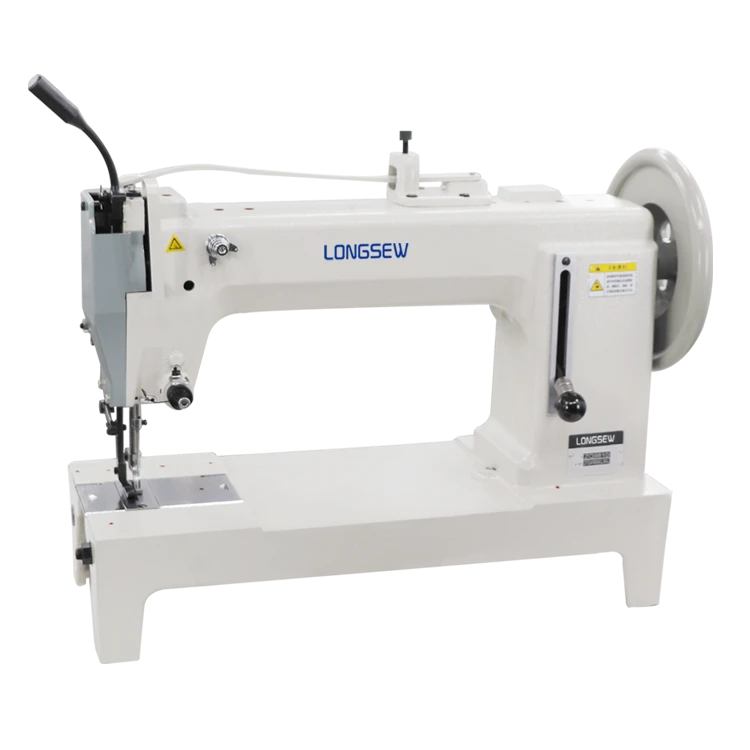Understanding Overlock and Coverstitch Machines for Professional Sewing Projects
Understanding Sergers and Coverstitch Machines A Comprehensive Guide
In the world of sewing, two machines often stand out for their unique capabilities sergers and coverstitch machines. While they might be less familiar to the casual sewist, they play crucial roles for anyone looking to elevate their sewing projects, particularly in garment construction. Let’s delve into the functionalities, advantages, and differences of these two machines.
What is a Serger?
A serger, sometimes called an overlock machine, is designed to finish edges and seams with precision. Unlike a traditional sewing machine, which uses a single needle and thread, a serger typically employs multiple threads (usually 3 to 5) to create a strong, stretchy seam. This is particularly important in knit fabrics, where flexibility is essential.
The primary functions of a serger include
1. Edge Finishing A serger trims the fabric while simultaneously sewing, creating a clean finish that prevents fraying. 2. Seaming Sergers can sew seams that stretch, which is especially useful for athletic wear and other garments that need to withstand movement. 3. Rolled Hems Many sergers can create rolled hems, ideal for lightweight fabrics.
What is a Coverstitch Machine?
In contrast to a serger, a coverstitch machine is primarily used for hemming and decorative stitching. It is particularly favored in the production of T-shirts and activewear. Coverstitch machines typically use two or three needles and a looper, creating a stitch that is both flat and stretchy, making it perfect for finishing hems without adding bulk.
Key features of a coverstitch machine include
serger and coverstitch machine

1. Flatlock Stitching This type of stitch is useful for seams that need to lay flat against the body, preventing irritation. 2. Hemming Capability Coverstitch machines excel in sewing hems, providing a professional finish that is both durable and flexible. 3. Decorative Stitch Options Many coverstitch machines offer variations in stitching that can add visual interest to garments.
Key Differences Between Sergers and Coverstitch Machines
While both sergers and coverstitch machines are designed to enhance the sewing process, their functions are distinct
- Stitch Types Sergers are primarily used for overlocking and edge finishing, while coverstitch machines are focused on flat hems and decorative stitching. - Thread Configuration Sergers typically use a combination of three to four threads for overlocking, whereas coverstitch machines use two or three needles to create a parallel stitch line. - Machine Structure A serger has blades that cut fabric as it sews, while a coverstitch machine does not have cutting capabilities, making it unsuitable for edge finishes.
Why Invest in Both?
For serious sewists or those running a small fashion business, investing in both a serger and a coverstitch machine can be extremely beneficial. The combination allows for complete versatility in handling both intricate designs and robust construction. With a serger, you can efficiently finish seams and fabrics, while a coverstitch machine provides the flexibility needed for creating professional hems.
Conclusion
Sergers and coverstitch machines are invaluable tools for modern sewists, offering specialized functions that can significantly enhance the quality and durability of garments. Understanding the differences in their capabilities allows sewists to choose the right machine for their specific needs, leading to more professional-looking results. Whether you’re an avid hobbyist or a professional looking to streamline your sewing process, considering the addition of these machines can provide the edge needed to take your projects to the next level. With the right knowledge and tools, the possibilities in garment creation are limitless.
-
Revolutionizing Sewing with CNC TechnologyNewsMar.28,2025
-
Revolutionizing Efficiency with Automatic Sewing MachinesNewsMar.28,2025
-
Mastering Precision with Sewing Machines and ToolsNewsMar.28,2025
-
Mastering Precision with Double Needle and Chain Stitch Sewing MachinesNewsMar.28,2025
-
Leather Sewing Machines for Every NeedNewsMar.28,2025
-
Find the Best Deals on the Adler 205 370 Sewing MachineNewsMar.28,2025
-
The Essential Guide to Overlock Sewing MachinesNewsMar.18,2025





























